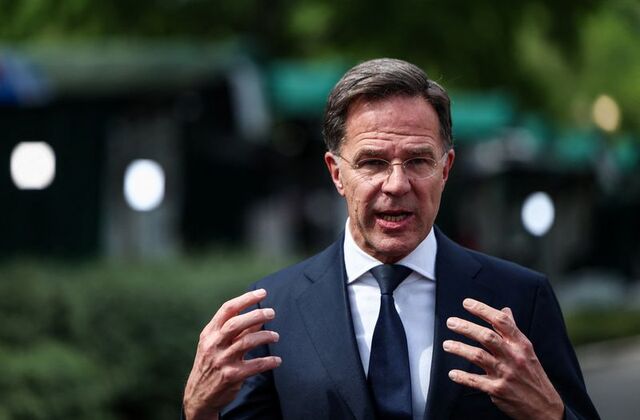Lithuania Calls for Openness in Nato Defense Plans
Lithuania has made a strong appeal to Nato this week, urging the alliance to stop keeping its military capability gaps secret. According to Kęstutis Budrys, Lithuania’s national security adviser, making such information public could help countries persuade their citizens to support increased defense budgets. This comes at a critical time when Nato leaders are gathering in The Hague to discuss raising their defense spending target.
Currently, Nato countries are expected to spend at least 2 per cent of their gross domestic product (GDP) on defense. But now, discussions are underway to increase that number to 3.5 per cent, along with an extra 1.5 per cent on military infrastructure. Some countries, like Spain, have already secured exemptions from this new pledge, revealing just how difficult the discussions are.
Budrys explained that secrecy around which weapons and equipment Nato countries lack actually weakens the arguments made by governments pushing for higher defense budgets. “If we would declassify them, and show to our societies what we have and what we need, it would be much easier to convince them to support this decision,” Budrys told the Financial Times.
While the Baltic region—Lithuania, Latvia, and Estonia—supports high military spending because of its close proximity to Russia, other European nations further away are less convinced. Budrys pointed out that those are the countries where public support needs the most convincing.
Baltic States Boost Defense Budgets Amid Rising Threats
Lithuania and its Baltic neighbors are among the most vulnerable Nato members. These countries sit right next to Russia and have been increasing their defense spending dramatically since the Russian invasion of Ukraine. All three Baltic states aim to spend over 5 per cent of their GDP on defense by next year.
Lithuania is planning to increase its land troops to a division size, which means it will have around 17,500 soldiers by 2030.
Germany, a fellow Nato member, has also committed to stationing a permanent brigade in Lithuania by 2027. This commitment shows how seriously the region takes the threat.
In addition, Nato countries—including the United States, United Kingdom, France, and Canada—have already stationed forces across the Baltics. These forces are part of Nato’s wider effort to protect the region and include roles like air policing and rapid response teams.
Despite these measures, Budrys believes the conversation within Nato needs to move beyond just percentages and spending figures. He said that people are more likely to understand and support defense increases if they know what types of weapons or equipment are lacking—like air defense systems, artillery stockpiles, or long-range missiles.
Nato Faces Pressure Over Classified Defense Capabilities
Nato officials have so far avoided commenting directly on Budrys’ suggestion to make military needs public. However, one official did confirm that the alliance has set ambitious targets for building up its capabilities. These include a 400 per cent increase in air and missile defense systems, as well as thousands of new tanks, armored vehicles, and millions of artillery shells.
The concern from Lithuania is that without transparency, discussions around defense spending become focused only on hitting targets. Budrys warned that such “number-only” discussions can turn toxic in countries where the public is not fully informed or supportive of higher military budgets.
This debate over transparency is unfolding as Nato faces new geopolitical challenges. With tensions high due to recent military actions involving the United States, Israel, and Iran, European leaders are facing public pressure to explain their defense policies clearly.
Meanwhile, Europe’s foreign ministers are also watching the Iran crisis closely. They fear possible retaliation from Iran against Western citizens and businesses. With risks to oil supplies and trade routes, especially through the Gulf region, leaders are also concerned about the economic fallout.
